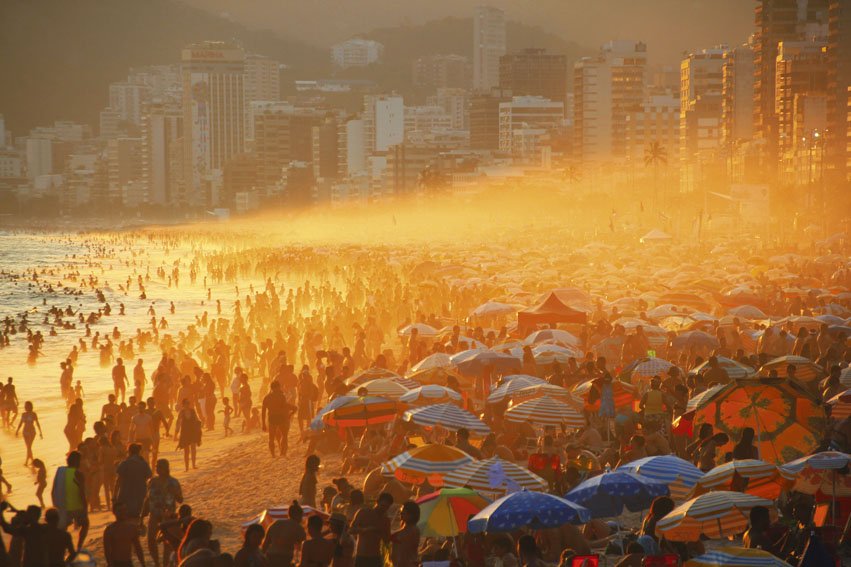
In the Kingdom of the marimba
By: Iván Beltrán Castillo
Photos: Lisa Palomino
Producer: Sonia Lahoz
The Origins
He was well known on the streets as a peddler of guava and cheese empanadas and sweet pastries, which he sold from a basket, hawking his wares with songs and rhymes and, when it came to girls, respectful gallantry. He was one of the obedient children of Juana Francisca, a composer of verses from the Chocó region, and Joaquin, a worker on Colombia’s chimerical Pacific Railroad.
His name was Petronio Álvarez and he was dark and burly. His deeply-lined face evoked the fierce countenance of African deities and his character seemed to evoke the wild and primitive nights of this continent.
Petronio came into this world in Buenaventura, in a faraway corner of the Valle del Cauca province long ignored by the orthodox members of the white community, who rejected Afro-Colombians for not fully integrating with white creeds and customs. This pagan shadow hanging over the region divided the population and expressed itself in cruel exclusions. Petronio struggled hard, traveling from place to place in an (unsuccessful) attempt to ensure that this corner of the Pacific would not succumb to historical, political, and social calamities. He was a sensitive man who fell in love only once and forever, with the romantically-named Venerada, and despite his musical inclinations he formed a family that lasted a lifetime.

Like many others, he traveled to the port city hoping to join the ranks of workers there, a disparate mass that has for decades produced a sizeable portion of the national wealth.
He was hired and, through iron discipline, graduated from the most elementary jobs to those reserved for proven and trusted men, becoming an engineer on the locomotives that warmed their engines each morning before carrying essential materials back and forth along the rails.
And this engineer sang, regardless of time or circumstances, to brighten the work days of his colleagues and other employees, to keep the deadly midday heat at bay, to forget about his poor salary and abuse from his bosses, but mostly because he couldn’t help it; he suffered from “lyric fever,” a kind of beautiful musical dictatorship that takes over one’s soul. He composed currulaos and bambucos, pasillos and candomblés, and, at the height of his universal vocation, tangos like those upon which Gardel’s legend was built.

The Festival
The Petronio Álvarez Festival began as an almost secret underground celebration for lovers of this music from Colombia’s Pacific coast, most of whom were members of the Afro-Colombian community that inhabited the ports and coastal towns of the Valle del Cauca, Chocó, and Nariño departments.
For decades, their cultural identity had been minimized, mocked, and even violated. Fishermen, artisans, small merchants, gatherers, goldsmiths, carpenters, social leaders, poets, and musicians were forced to carry out their celebrations and rituals in the shadows. But once in the heat of the celebration, they became great dancers and witty lyricists. They enjoyed the locally homebrewed spirits, said to have aphrodisiac properties, and sang the praises of their worldview, of love and loyalty, and the beauty of their surroundings. Rarely did these events end in violence or despair.
The marimba, with its bewitching sound, was sacred to them and it slowly burrowed its way into the hearts of people from outside the Afro-Colombian community. Jazz, blues, and salsa-lovers contributed to the music’s expansion until, suddenly, in the most natural way possible, it became socially acceptable and everyone began to venerate it.
On August 9, 1996, in a tiny and very homey setting, the Petronio Álvarez Festival sprang to life, thanks to the hard work of sociologist and scholar, Germán Patiño Ossa. The festival, in its genesis, was strictly a music competition, but the human swell that rose up behind the music encouraged the festival’s organizers to embrace other expressions, such as gastronomy, fashion, accessories, poetry, ornaments, crafts, pictorial art, and even Afro-religious expressions.

Give and Take
“We’ve never been as close, as brotherly, or as supportive as we are now. The wave of people you see here, the Afro-Colombians who haul their instruments from their homes all the way to the stage they’ve dreamed of, are proof that something has happened to us, a communion has crystallized over time into a symbol of the definitive and very positive brotherhood here in the Valle del Cauca province,” says Antonio, a sociologist visiting the fair with his whole family. He claims to have never missed a festival. He used to come alone, but thanks to his silver tongue he eventually convinced the other members of his family, as well as his friends and colleagues, until, miraculously, his entourage grew into a small, smiling battalion.
This year the 23rd Petronio Álvarez Festival drew record numbers that moved the event into the realm of other major festivals and made it, without a doubt, one of the best attended and most significant African-American festivals on the continent. The most impressive figure is the 15.4 million-dollar return on a 1.5 million-dollar investment, all thanks to the musical arts.
The organizers, led by Colombia’s current Minister of Culture, Carmen Vázquez, report an “extraordinary revitalization of the economy, support for Afro-cultural entrepreneurship, and an overwhelming demand for hotels in the city of Cali. Construction of the Petronio Álvarez Cultural Fairgrounds and event operations created a total of 1,850 temporary jobs, according to data provided by festival operators, not to mention sales by street vendors in the area.”

And the organizers continue to extol the benefits of Petronio: “COTELVALLE [Association of Hotels in Valle del Cauca] reported that hotel occupancy in Cali between August 14 and 19 reached 80.24%, at an average rate of $54 USD/night (78% Colombian and 21.8% foreign guests).
This in itself speaks of an interest in the festival unheard of in its early days. In 2019, 158 groups from more than fifty municipalities in the Colombian Pacific and the nation’s capital competed in the classifying rounds and included representatives from Bogotá, Istmina, Timbiquí, Valle Rica, Tumaco, and Cali. In other words, the nation’s cultural spectrum linked to Afro expressions and the music of the Pacific was represented almost in its entirety.”
The Origins
And so, the stocky, restless youth who wrote poetic lyrics by candlelight has become a legend after his untimely death at age 52. His name is now synonymous with the imagination, rebellion, poetry, and sensuality of the region’s excellent men and women, previously doomed to a dark corner in the backroom of history.
This report was made with support from the Colombian Ministry of Culture.



